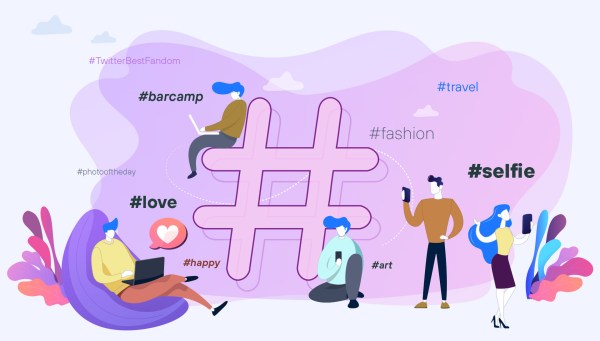- The first social network in history, SixDegrees, was created in 1997 based on the premise that it is possible to connect with anyone in the world in just six steps.
- This six-step theory was not new, as it was based on a proposal made in 1929 by Hungarian writer Frigyes Karinthy in a short story called ‘Chains’.
- Facebook (founded in 2004), Twitter (2006), Instagram (2010) and TikTok (2016) have become part of the daily lives of billions of people around the world.
Although it may seem relatively recent, we have to go back to the end of the 20th century to find the first social networks, a social phenomenon that even has its own specific day, namely 30 June.
Origin of Social networks: the six degrees theory
In 1997, SixDegrees emerged, a network with which different people could be located by creating lists of friends based on the well-known premise that it is possible to connect with anyone in the world in just six steps.
Precisely from these six degrees of separation comes the name of this first social network, a theory proposed in 1929 by the Hungarian writer Frigyes Karinthy in a story called “Eslabones”. Yes, it predates Kevin Bacon.
This theory, as we have already mentioned, is based on the idea that any inhabitant of the planet is connected to any other inhabitant by means of five unique intermediaries, which is the origin of the six links.
It is a concept that arises from the fact that each person’s acquaintances multiply exponentially as the number of links in the chain increases.
The 21st century: the emergence of social networks
It would be impossible to list all the existing social networks, so we will limit ourselves to some of the most significant ones. The 21st century saw the emergence of Friendster in 2002 and MySpace and LinkedIn a year later.
Also from the same period are Facebook (created in 2004), YouTube (in 2005) and Twitter (2006). Slightly later is Instagram, from 2010, while TikTok, the latest big phenomenon in social media, is more recent, from 2016.
Let’s learn a little more about some of the most representative ones.
Facebook was created in 2004 by Mark Zuckerberg, one of the technological entrepreneurs who have changed recent history, while he was a student at Harvard University. He had previously launched Facemash, a portal that collected names and photos of students at the school and, although it was only active for a few hours, it attracted almost half a thousand users and caused more than 20,000 photos to be moved.
The growth of this social network began when students from outside Harvard were allowed to register, with the big leap occurring in 2006, although some of the original users complained that part of the essence with which it was conceived had been lost.
Until 2021, the social network shared a name with the company, although at that date it was renamed Meta, under whose umbrella other social networks such as Instagram (acquired in 2011) and WhatsApp (acquired in 2011) are incorporated.
In 2024, according to the Digital 2024 study, Facebook is the social network with the most users on the planet: 3,000 million.
Don’t miss Telefónica’s activity on Facebook.
YouTube
Founded by three engineers who had met while working at Paypal (Jawed Karim, Steve Chen and Chad Hurley), the domain was activated on 14 February 2005 and the first video, “Me at the Zoo“, starring one of the co-founders, Jawed Karim, was uploaded on 23 April 2005.
The year after its launch, YouTube was acquired by Google for $1.65 billion.
The birthplace of numerous viral phenomena, YouTube’s use has varied over the years: from a platform where TV programme clips were uploaded to a place for artists to premiere their video clips or a space for live broadcasts of presentations or even sporting events.
It is currently the social network with the second largest number of users in the world, 2.5 billion, although the truth is that it is the one that accumulates the most time per session, exactly 7 minutes and 25 seconds.
Don’t miss Telefónica’s activity on YouTube.
X – formerly Twitter
Twitter was founded in 2006 by Jack Dorsey, and was characterised for years by the limited amount of text per post, namely 140 characters, which was later increased to 280 characters per tweet.
In October 2022, the entrepreneur Elon Musk bought Twitter for 44 billion dollars, renaming it X in July 2023.
Although it is true that, in terms of volume of users, X is not one of the largest (some 619 million in 2024), in terms of influence it enjoys a high level of social and media relevance.
Numerous personalities (from fields as varied as sports, politics and business) use this platform to express their opinions or provide information as official sources, which means that these messages go far beyond the scope of this social network alone, reaching from other networks to the traditional press.
The term trending topic, already used as a synonym for issues of great relevance and popularity, emerged precisely on Twitter as a way of organising the ten most relevant topics of conversation of the moment, with users being able to narrow it down geographically.
Don’t miss Telefónica’s activity on X.
Founded in 2010 by Kevin Systrom and Mike Krieger, it was very popular from the start, with more than 100 million active users in April 2012, a date on which Facebook bought it for a billion dollars.
Although originally focused on photographs, this social network has also achieved great popularity with videos.
Two of IG’s applications have stood out for its users: stories (not without controversy with Snaptchat, a network based on the expiration of content, a feature shared with stories) and reels (similar to TikTok, with short videos to which pre-existing sounds can be added).
In 2024 it has around 2 billion users worldwide (fourth in this ranking), although it is the first in preferences as the favourite social network, chosen by 16.5% of the population, with a special incidence among the under 35s.
Don’t miss Telefónica’s activity on Instagram.
Created at the end of 2002 (by Reid Hoffman, Allen Blue, Konstantin Guericke, Eric Ly and Jean-Luc Vaillant) and in operation since May 2003, LinkedIn is the great social network oriented towards the world of business and employment.
In 2011, it made history by becoming the first social network to go public, five years before being acquired by Microsoft for 26.2 billion dollars.
With a vocation to serve as a meeting point between employers and potential employees, it also has an aspect to create a community from a professional perspective.
Don’t miss Telefónica’s activity on LinkedIn.
TikTok
China’s TikTok is the youngest of the social networks, launched in its country of origin in 2016, characterised by short videos in vertical format.
The fifth social network with the most users as of 2024, with 1.6 billion, has experienced an enormous growth of 50% since the previous year.
In terms of time spent on the different social network applications, TikTok ranks first with 34 hours of usage per week on average. If we focus on the duration of each session, TikTok is in second place behind YouTube, with 5 minutes and 56 seconds compared to the 7 minutes and 25 seconds of Google’s video platform, as mentioned above.
Don’t miss Telefónica’s activity on TikTok.
Twitch
Founded in 2008 (and acquired by Amazon in 2014), Twitch is the great reference in the broadcasting of eSports competitions and other events related to video games.
As a curiosity, four of the six channels with the most followers on Twitch worldwide are Spanish: specifically Auronplay (second, with 26.4 million), Ibai (third, with 15.7 million), Rubius (fourth, with 15 million) and TheGrefg (sixth, with 12 million). The ranking is headed by the American Ninja with 19 million followers and in fifth position is the Canadian xQc.
Don’t miss Telefónica’s activity on Twitch.
Social networks at Telefónica
With more than two and a half million followers, Telefónica is present in different social networks: from the oldest to some of the most recent, covering a wide range of audiences and publics.
An example of presence in new digital spaces is Telefónica Town, a virtual city in Roblox that the company recently announced.
FAQ
SixDegrees was launched in 1997.
In 2004.
In 2005.
In 2010.
In 2016.







